Occupational safety training for operating silk screen printing machines
99,000 ₫
Note: The above price is calculated per person and may vary depending on the number of participants in the course and market fluctuations. For more accurate price support, please refer to the pricing table or contact our consulting staff directly.
Occupational safety is an important issue when operating silk screen printing machines and needs to be addressed promptly to ensure the health and safety of workers and enhance the reputation of businesses here. The Occupational Safety Training course is one of the effective solutions to raise awareness about accident prevention for workers operating silk screen printing machines.
Table of Contents
Toggle1. Overview of the Screen Printing Machine
a. What is a Screen Printing Machine?
A screen printing machine, also known as a mesh printing machine, is a device used in screen printing technology to create images, text, or designs on various surfaces such as fabric, paper, plastic, metal, or wood. It is a traditional printing method favored for its ability to produce high-quality and diverse prints.
Applications
- Fashion: Printing designs on t-shirts, clothing, and accessories.
- Advertising: Printing advertising boards, posters, and signs.
- Art: Creating artistic prints on fabric or paper.
- Packaging: Printing logos and information on product packaging.
Advantages
- High Quality: Capable of producing sharp and durable images.
- Durability: Ink adheres firmly and lasts long, especially on difficult surfaces.
- Flexibility: Can print on many different types of surfaces.
Disadvantages
- High Setup Cost: Initial investment for machines and materials can be expensive.
- Long Preparation Time: The preparation and cleaning process can take time.
The screen printing machine is a powerful and flexible tool in the printing industry, helping create high-quality and professional printed products.

b. Operating principle of the Screen Printing Machine
Preparing the Screen Frame
- Frame and Mesh: A wooden or metal frame stretched with a thin mesh (usually nylon or polyester). The mesh functions to keep ink from leaking into unwanted areas.
- Coating with Photosensitive Emulsion: On the mesh, a layer of photosensitive emulsion is evenly applied. This layer hardens when exposed to light, creating a mask for the ink.
Creating the Print Design
- Exposure to Light: The design or image to be printed is exposed onto the photosensitive emulsion on the mesh. Typically, the design is placed on a film or a high-resolution print.
- Washing: After the emulsion layer dries and hardens, unwanted areas are washed away with water or cleaning chemicals. The result is an image or design shown on the mesh through the unblocked areas.
Applying Ink
- Ink Preparation: Ink is prepared and poured onto the mesh surface. Ink can be water-based, oil-based, or special ink depending on the material and surface to be printed.
- Ink Squeegee: Using a roller or squeegee, the ink is pulled across the mesh. The squeegee moves the ink through the open areas of the mesh and pushes it onto the printing surface. Ink only passes through the open mesh areas, creating the image or design on the target surface.
Drying
- Ink Drying: After printing, the product must be dried so the ink adheres firmly to the surface. Drying can be done with heat dryers or other suitable methods depending on the ink type.
Cleaning
- Cleanup: After the printing process, the mesh and equipment need to be cleaned to remove excess ink and remaining emulsion. This helps preserve the equipment and prepare for the next print run.

c. Industries using the Screen Printing Machine
Fashion Industry
- T-shirts and Clothing Printing: Screen printing machines are used to print designs, patterns, and logos on t-shirts, clothing, and fashion accessories.
- Swimwear and Shoes Printing: Screen printing is also applied for swimwear, footwear, and other accessories.
Advertising and Marketing Industry
- Advertising Boards and Signs: Used to print advertising boards, signs, and direction boards. Screen printing allows sharp and durable images on materials like plastic, metal, and wood.
- Posters and Flyers: Printing high-resolution, colorful advertising posters and flyers.
Art Industry
- Art Prints: Many artists use screen printing machines to create unique and high-quality art prints on paper, fabric, and other surfaces.
- Special Edition Prints: Producing limited edition or special version prints for artworks.
Packaging and Label Industry
- Product Packaging: Used for printing information and designs on product packaging such as boxes, bags, and bottles.
- Labels: Printing product labels with brand information and usage instructions.
Industry and Manufacturing
- Printing Components and Equipment: Used to print on electronic components, industrial equipment, and products requiring technical information or logos.
- Furniture Manufacturing: Printing designs and patterns on furniture products such as panels, curtains, and carpets.
Education and Training
- Study Materials: Printing textbooks, study materials, and other educational documents with sharp images and designs.
- Books and Magazines: Used in publishing to create high-quality prints for books and magazines.
Food and Beverage Industry
- Labels and Packaging: Printing labels and packaging for food and beverage products, ensuring clear and attractive information.
2. Overview of Occupational Safety Training for Operating Screen Printing Machines
a. What is Occupational Safety Training?
- Occupational safety training for operating screen printing machines consists of sessions that equip workers with awareness on how to prevent occupational accidents. Those who work directly with screen printing machines fall under group 3.
- This safety training course helps workers identify and avoid hazards, reducing the risk of workplace accidents during operations.
REGISTER FOR OCCUPATIONAL SAFETY TRAINING SERVICE
b. Training Duration
Initial Occupational Safety Training Duration
- Total training time is at least 24 hours, including examination time.
- 8 hours of theory on policies and laws related to occupational safety and hygiene.
- 8 hours of theory on basic occupational safety and hygiene knowledge.
- 4 hours of theory on specialized training content.
- 2 hours of practical training on specialized content.
- 2 hours of final theoretical examination.
The safety training center will arrange the schedule into several sessions depending on worker availability. Typically, there are 6 training sessions over 3 days, provided the manufacturing enterprise can arrange continuous learning time.
Periodic Occupational Safety Training Duration
- Before the occupational safety card expires, workers who want to renew it must complete a periodic occupational safety training course, with the periodic training duration being at least 50% of the initial training duration.
Explanation: The total time for periodic occupational safety training is at least 12 hours, including examination. Upon successful completion and passing the test, workers will be reissued or have their occupational safety card renewed.
c. Training Content
| No. | TRAINING CONTENT | TRAINING DURATION (HOURS) | |||
| Total | Including | ||||
| Theory | Practice | Test | |||
| I | System of policies and laws on occupational safety and hygiene | 8 | 8 | 0 | 0 |
| 1 | Overview of the legal documents system on occupational safety and hygiene. | 6 | 6 | ||
| 2 | System of standards and technical regulations on occupational safety and hygiene. | 1 | 1 | ||
| 3 | Specific regulations from state management agencies on occupational safety and hygiene when constructing, expanding, or renovating production facilities and equipment requiring strict safety and hygiene standards. | 1 | 1 | ||
| II | Basic knowledge about occupational safety and hygiene | 8 | 8 | 0 | 0 |
| 1 | Basic knowledge of hazardous and harmful factors in the workplace. | 4 | 4 | ||
| 2 | Methods to improve working conditions. | 1 | 1 | ||
| 3 | Safety culture in production and business. | 1 | 1 | ||
| 4 | Rights and obligations of employers and employees; policies and regimes on occupational safety and hygiene for employees; functions and duties of safety networks and safety officers. | 1 | 1 | ||
| 5 | Occupational safety and hygiene rules, safety signs, instructions, use of safety equipment and personal protective equipment; accident first aid skills, occupational disease prevention. | 1 | 1 | ||
| III | Specialized training content | 6 | 4 | 2 | 0 |
| Comprehensive knowledge about machines, equipment, and substances that cause hazardous and harmful factors; risk analysis, assessment, and management on occupational safety and hygiene; safe working procedures with machines, equipment, and substances requiring strict safety and hygiene standards. | 6 | 4 | 2 | ||
| IV | Final occupational safety training test | 2 | 2 | 0 | 0 |
| Total | 24 | 22 | 2 | ||
See more about training content of the 6 groups
d. Occupational Safety Card
After completing the occupational safety training course and passing the test, workers will be issued an occupational safety card (commonly called the occupational safety certificate for group 3).
The group 3 safety card clearly shows information such as: full name, date of birth, job and specific work environment. It also includes training time, a red stamp, and a signature confirming completion of the training course.
According to the regulations on issuing safety cards stated in Clause 2 of Article 24 of Decree 44/2016/ND-CP, there are two cases:
- If the employer and employee have a labor contract with each other, then the employer must sign, stamp, and endorse the safety card for the trained group 3 employee after completing the training from the occupational safety training unit and passing the test.
- If the worker is freelance or temporary without a labor contract, the training unit must sign, stamp, and endorse the safety card after the worker completes the training and passes the test.

3. Hazards for workers when operating the screen printing machine (Screen Printing Machine)
Chemical Hazards
- Ink and Chemicals: Ink and cleaning chemicals often contain compounds that can irritate the skin, eyes, or respiratory system. Prolonged exposure may lead to serious health issues such as dermatitis, allergies, or respiratory problems.
Mechanical Hazards
- Cutting and Moving Parts: Moving parts of the machine such as rollers, squeegees, and mesh frames can cause injuries like cuts, impacts, or pinching.
High Temperature Hazards
- Ink Drying: During the drying process, the dryer equipment can reach high temperatures, posing risks of burns or fire/explosion.
Strong Light Hazards
- Exposure to Light: The screen printing pattern making process often uses strong light, especially UV light, which can harm eyes and skin.
Work Posture Hazards
- Poor Posture: Standing or sitting in uncomfortable positions for prolonged periods can cause musculoskeletal problems, back pain, and fatigue.
Noise Hazards
- High Noise Levels: Screen printing machines can generate loud noise, affecting hearing if uncontrolled.

4. Measures to control occupational accidents when operating screen printing machines (Screen Printing Machine)
Training and Education
- Safety Training: Provide comprehensive training for workers on safe machine operation, hazard recognition, and emergency procedures.
- PPE Usage Instruction: Ensure workers know how to use and maintain personal protective equipment (PPE) such as gloves, safety glasses, and masks.
Use of Personal Protective Equipment (PPE)
- Gloves: Wear gloves to protect hands from chemical exposure and machine parts that can cause cuts or pinching.
- Safety Glasses: Use safety glasses to protect eyes from chemicals and strong light.
- Masks: Use masks to protect the respiratory system from dust, chemical fumes, and ink odors.
- Safety Shoes: Wear safety shoes to protect feet from impacts or being pinched.
Maintenance and Regular Inspection
- Machine Maintenance: Perform regular maintenance and inspection of machine parts to detect and repair issues that may cause accidents promptly.
- Safety Checks: Periodically check safety systems of machinery, such as protective covers and safety guards.
Chemical Management
- Safe Storage: Store chemicals and inks in well-ventilated areas and comply with chemical storage regulations.
- Chemical Use and Handling: Monitor and follow safety procedures when using and handling chemicals, including wearing PPE and ensuring ventilation.
Work Area Design
- Ergonomic Layout: Design the workspace to allow workers to operate comfortably, minimizing strain and fatigue.
- Ventilation System: Ensure good ventilation to reduce chemical fumes and ink odors in the air.
Incident and Emergency Handling
- Incident Procedures: Develop and disseminate procedures for emergency situations like chemical leaks, fires, or workplace accidents.
- Emergency Drills: Organize regular emergency response and first aid training for all employees.
Monitoring and Evaluation
- Monitoring: Track machine operation and occupational safety status to detect potential risks and adjust work procedures as needed.
- Risk Assessment: Regularly evaluate and update risk control measures to fit real conditions and changes in work.
Accident Reporting and Investigation
- Accident Reporting: Encourage workers to report accidents and incidents immediately.
- Accident Investigation: Conduct investigations to determine causes and implement improvements to prevent recurrence.
5. Benefits of Occupational Safety Training
An Toàn Nam Việt provides your business with great benefits after completing occupational safety training courses in accordance with Decree 44/2016/ND-CP on occupational safety and hygiene. Companies, factories, and enterprises:
- Workers can recognize potential occupational accident hazards and take preventive measures to avoid accidents.
- Your business can establish risk prevention measures in production, operation, and maintenance processes.
- Reduce costs related to occupational safety risks.
- Uninterrupted production increases labor productivity and product quality.
- Compliance with labor safety laws reduces legal risks.
- Enhances reputation and professionalism, thereby elevating your business brand.
Nam Việt’s training courses are the solution to prevent external factors affecting individuals, helping them avoid dangers that could cause injury or even death.
REGISTER FOR OCCUPATIONAL SAFETY TRAINING SERVICE
6. Customer feedback after completing the training course
An Toàn Nam Việt has many years of experience accompanying numerous businesses across Vietnam, especially in southern provinces. This responsibility is extremely precious to Nam Việt, so our Occupational Safety Training work is increasingly professional. Our motivation to grow comes from positive feedback and suggestions from businesses. Below are some testimonials from our valued partners.
Hoa Đất Construction and Trading Joint Stock Company
“Nam Việt’s service helped us greatly simplify occupational safety and complete safety documentation for our work process. The consultant team was enthusiastic and timely in answering our questions. 5 stars for Nam Việt.”
See more customer interviews after using An Toàn Nam Việt’s service
7. Occupational Safety Training Competence of An Toàn Nam Việt
An Toàn Nam Việt is a reputable and quality occupational safety training center in Vietnam today. Safety training sessions are continuously held at factories, workshops, or construction sites nationwide (63 provinces of Vietnam).
REGISTER FOR OCCUPATIONAL SAFETY TRAINING SERVICE
Occupational safety training license
- An Toàn Nam Việt has been inspected and certified by the Safety Department of the Ministry of Labor – Invalids and Social Affairs as qualified to conduct occupational safety and hygiene training. This further strengthens our capability in occupational safety training.

Training materials and lectures
- Before being used in occupational safety training courses, materials are reviewed to ensure accuracy and effectiveness.
- Teaching methods are standardized according to An Toàn Nam Việt’s teaching standards, developed by experts in occupational safety and hygiene training to maximize knowledge absorption.
Facilities
- Controlling factors in classrooms improves teaching performance and student learning efficiency.
- Our training facilities always provide spacious classrooms meeting standards on area, lighting, training equipment, etc.
8. Nationwide reputable quality safety training center
At An Toàn Nam Việt, we always prioritize occupational safety training as a heartfelt profession. For us, passing on knowledge so workers can protect themselves is contributing to building the country.
To ensure training effectiveness, we carefully prepare every detail, from tools, teaching equipment to curriculum, materials, audio, and lighting.
Our trainers are experts with many years of experience and have research works on hazard identification across industries and prevention methods.
Lectures are practical, lively, and easy to understand for workers. This creates a comfortable learning environment and helps learners absorb knowledge effectively. The content strictly follows Decree 44/2016/ND-CP.
Thus, workers learn many prevention measures and how to protect themselves, applying them suitably in real work.
Our safety training center proudly provides reliable, professional occupational safety training services with the following advantages:
- Competitive training costs with guaranteed quality.
- Flexible training schedules that fit company production conditions.
- Fast and lawful certification procedures for occupational safety training.
- Experienced trainers with many years in the field.
- Classroom conditions controlled to enhance teaching efficiency and student learning.
- Course content tailored for occupational safety in enterprises.
- An Toàn Nam Việt works dedicatedly and professionally to provide accurate and fast support to customers.

9. Additional occupational safety training materials
- Occupational safety materials for screen printing machine operation
- Occupational safety training material set
- Occupational safety training test set
- Occupational safety training curriculum for screen printing machine operation
- Occupational safety multiple-choice test for screen printing machine operation
No comments yet

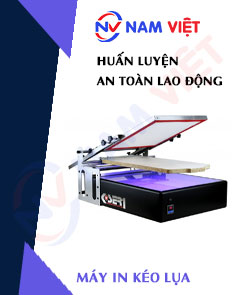
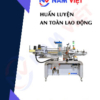
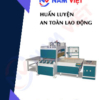



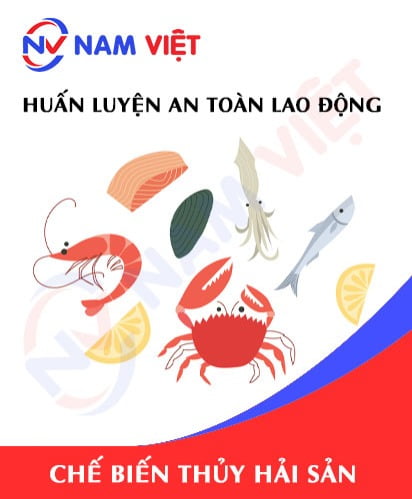
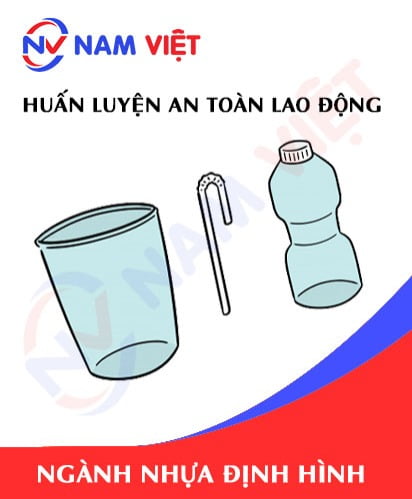
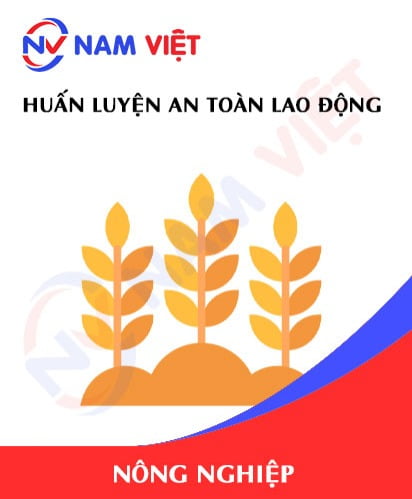
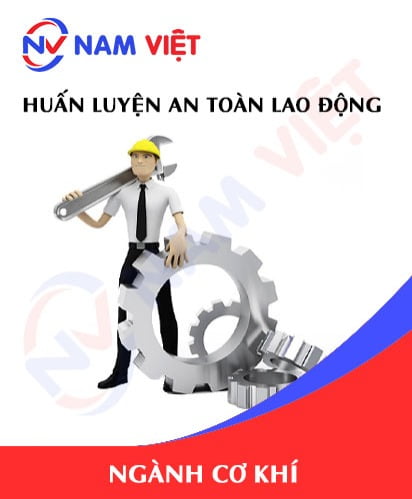

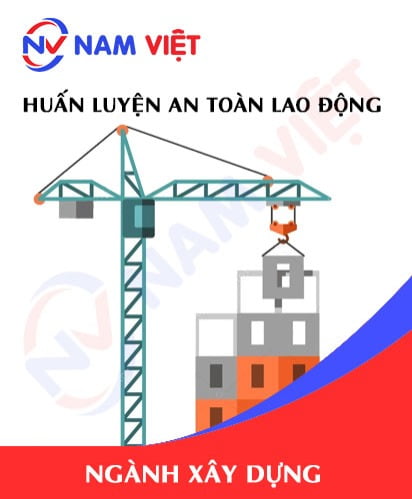


Review Occupational safety training for operating silk screen printing machines
There are no reviews yet.